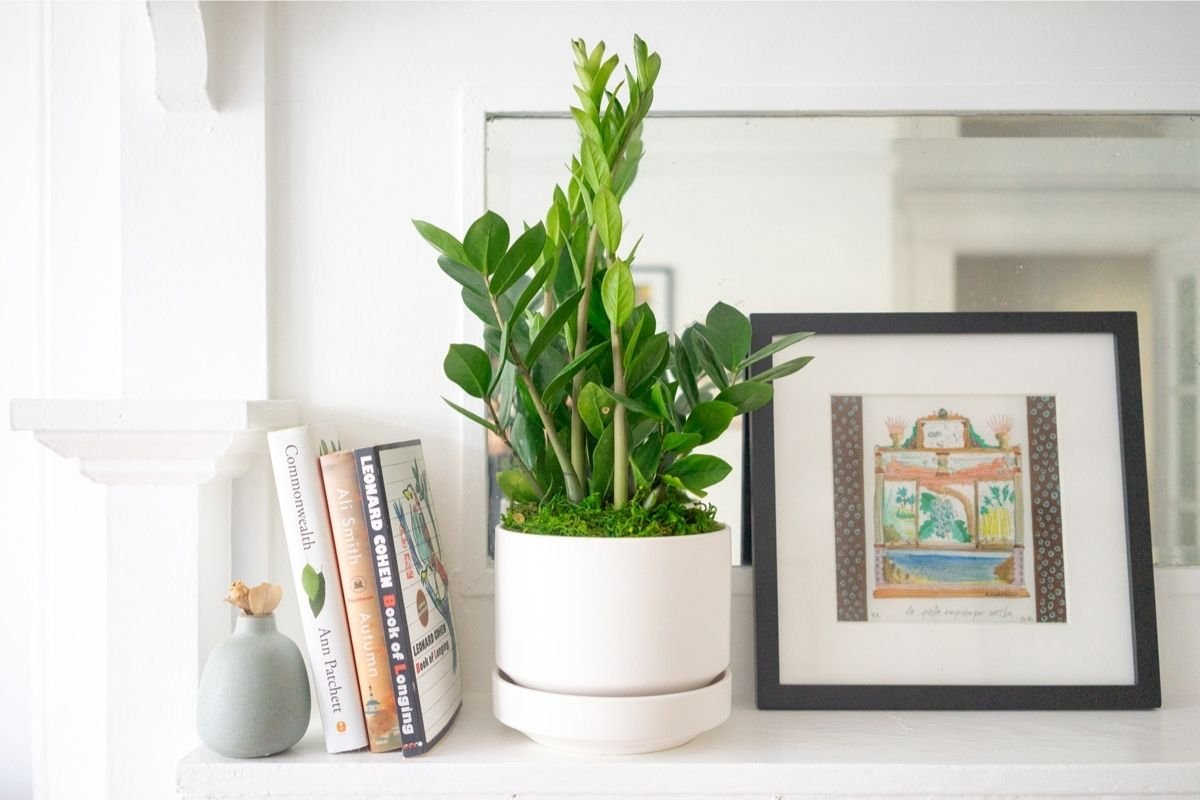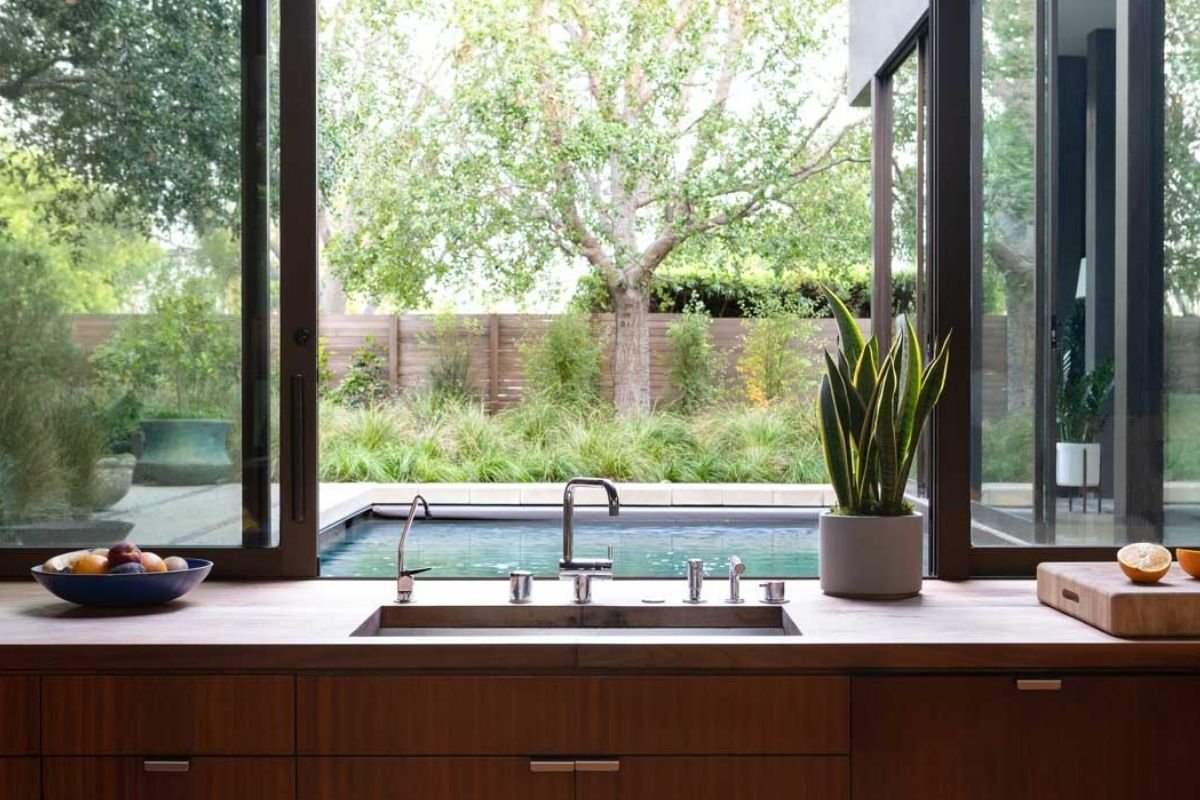Succulents are a wildly popular plant family for indoor placement- and for good reason! Known for their juicy foliage structures, succulents have fleshy leaves, stems and roots that were designed to store water in the plant itself. In other words, succulents are about as self-sufficient as a plant can be in terms of water: they practically water themselves! Many succulent plants are also potent air purifiers, so these beauties do a lot of work while requiring very little care. Given their popularity, it’s possible that you’ve heard all of this about succulents before. But get ready for a little-known fact: there are a huge variety of succulents that you likely have not heard of. And when you’re ready to buy a succulent, you don’t have to settle for the same run-of-the-mill variety you see at big box stores. You have options, so read on. We’ve compiled a list of everything you need to know before you pick the perfect succulent for your space!
Which Succulent Variety Is Right For Me?
So you’re kicking off your succulent journey and ready to shop! We’re as ready as you are to let the fun begin. But before you buy, think about the aesthetic that you’re looking for from your succulent. Seeking a glossy succulent with tons of foliage? A Zanzibar Gem is the perfect fit. If you love the wild, jungle style of aloe varieties, a Snake Plant is ideal. Many of us are used to seeing petite succulents around that could fit in a teacup- and they’re charming! But they are the tip of the iceberg. You don’t have to sacrifice size when you choose a succulent. Plenty of succulent varieties can achieve great heights, like the Zanzibar Gem, Snake Plant, Ponytail Palm and Euphorbia Ammak.
Flowering Succulents Exist- And They Are Gorgeous!
Succulents are already such a cheerful plant family that you could argue that they don’t need blooms. But who doesn’t love flowers (especially ones that can bloom year-round!)? Calandivas, also known as Kalanchoes, like the Snowdrop Calandiva and Sunshine Calandiva, are beautifully full, juicy succulents that blossom year-round. All they need is bright, indirect sun.
It’s Science! Air-Purifying Succulents
Just when we thought that NASA couldn’t get any cooler, we learned about their gold-standard Air Purifying Plants study. And you’ll be happy to hear that succulents come in on top, with varieties like the Snake Plant ranking especially high for their ability to eliminate toxins and convert carbon dioxide to oxygen. The Ponytail Palm is another great air purifier. Toxic gasses don’t stand a chance against the playful Ponytail Palm: it simply captures them in its canopy of blades, and converts them into fresh oxygen.
A Succulent For The Cactus Lover
We love cacti as much as the next team of avid horticulturalists, but we also know that you might be in the market for a cactus aesthetic without the ouch-factor. For your consideration: the Euphorbia Ammak! An air-purifying succulent with a classic, slender cactus structure, the Euphorbia Ammak is a gorgeous statement plant that can grow up to ten feet tall indoors. It still has the classic prickles that speak to iconic cactus beauty, but only a light amount, so you don’t need to worry about accidental injuries. As they say, moderation in all things: even cactus spikes!
A Note On Toxicity In Succulents
Good news for succulent lovers that cohabitate with furry friends and curious kids: there are non-toxic succulent varieties! That being said, you’ll find that succulent varieties have some degree of toxicity more often than not. And many popular indoor plants across the board have some toxic compounds- it’s an evolutionary trait, adapted by the plant to deter wild animals from snacking on them. Ponytail Palms are non-toxic (just another reason to love them!) but Calandivas, Sansevierias and Zanzibar Gems can cause illness when ingested. Luckily, most creatures are disinclined to munch a succulent no matter how delicious they look, but you can always read up on the toxicity designation of any plant species when you’re ready to buy a succulent. If toxicity is an absolute no-go, don’t panic: you still have options!
Watering Succulents Is Simple
Succulents are such great communicators: they will show you when they need water. Because succulents store their water throughout their structure, they will appear plump, firm and yes, “juicy” when they have sufficient water in their system. Thirty succulents will let you know by exhibiting foliage that looks soft or limp, wrinkled, or puckered. In general, succulents can survive for one to three months with no new water at all- but the other side of this coin is that overwatering can cause health issues fast. So err on the side of underwatering, stick your finger into your succulent’s soil every ten days, and water only when the top few inches of soil are dry. If your succulent wants more water, it will tell you.
Zanzibar Gems and Snake Plants are among the most easy-care succulents around!
And Overwatered Succulents Can Be Healed
Of course, you’ll never overwater your succulent (just kidding, we’ve all done it) but if you do, it’s not the end of the world. There’s an easy set of steps to rehabilitate overwatered succulents, and we have found that this method works like a dream.
First things first: get the succulent away from the “wet.” That means removing it from its pot, dumping out any standing water that may have accumulated, and knocking any soaking-wet soil off of the succulent’s root system and overall form.
Secondly, trim off any parts of the succulent that appear seriously waterlogged, mushy, or discolored. It can feel dire to perform minor surgery on your succulent, but the plant actually loves it. Trimming off unhealthy parts of the plant sends it a big signal to push out healthy new growth.
Once you have trimmed the succulent of any areas that have lost viability due to overwatering, let the plant dry out. You don’t need to place the plant back in its pot for now- just place it in a spot that receives lots of bright light, but isn’t in the direct patch of scorching rays. The goal is to dry the succulent out, not sunburn it. After a couple days of generous light, you should see the succulent’s soil dry out entirely.
At this point, you should have a nice, dry succulent on your hands. You can return it to its pot, and after a few days of acclimation, resume a watering routine. This time, with a lighter touch!
How Much Light Do Succulents Need?
Almost all succulents need ample, bright light to thrive. Placing your succulent close to a sunny window is a good bet for keeping the plant happy, especially if it is a Euphorbia Ammak, Calandiva or Ponytail Palm. Sansevierias like the Snake Plant and Zanzibar Gems are more flexible and can tolerate medium light, but in general, you can look to the native habitat of succulents as your guide. The majority of succulents are native to areas on or around the equator, and you know what that means: sun!
How To Select A Thriving, Gorgeous Succulent
We know what an underwatered succulent looks like (wrinkly, puckered, with soft or limp leaves) and we know what an overwatered one looks like, too: overwatered succulents will appear mushy, discolored or brown. So as you shop for a new succulent, look for these signs of good health: plump, firm leaves that appear “juicy”, a strong plant structure that has little stem or branch breakage, and soil that is not soaking wet. Ensuring that your succulent has been watered correctly before you buy it will go a long way toward ensuring that you have a healthy new plant on your hands.
Avoid Purchasing Your Succulent From A Garden Center
We love a great deal, but when it comes to living plants, you’re better off directing your bargain-shopping prowess toward other purchases. With all the consideration that you’ve putting into buying a gorgeous new plant, there’s no need to sell yourself short by buying one whose quality is sub-par, and you can avoid this by avoiding your new succulent from a garden center or home improvement store. The prices at these locations are often low for a reason: specifically, the fact that the plants are not premium quality or purchased from trusted, reputable growers. Premium growers know their plants, and they tailor their care to that plant species’ requirements. All plants don’t need the same light or water (though we admit that would be convenient!) and if you purchase a succulent from a garden center, there is a good chance that it has received just as much water as the plant next to it- which may need wildly more water than succulents do. Additionally, premium growers treat and prevent pests on plants prophylactically, ensuring that the plant you bring home will not bring bugs along with it.
Another aspect to consider when you’re ready to buy your new succulent is transportation. The wonderful things about succulents: those juicy, abundant leaves, their delicate blooms, and more are all prime reasons to make sure that your new plant is transported to your home with special care. Transporting a new plant in your vehicle- especially one with delicate leaves- can result in structural damage to the plant if it is tipped over or jostled. Additional consideration should be given to the fact that succulents are susceptible to becoming stressed by forced air from a car’s A.C. or vents. Transit can be stressful, and can result in health issues that take time to recover from.
Plan on buying your new succulent from a premium supplier that offers doorstep delivery, or ships utilizing packaging that is specifically engineered for the transport of plants. When you buy from a trusted supplier who knows their stuff and takes plant health seriously, you are able to reap the benefit of their expertise, and bypass any negative effects that might result from improper care or transportation.
Even The Healthiest Succulent Can Experience Stress From Time To Time
With appropriate water and light, your new succulent will have no problem thriving and maintaining beautiful health. But any living plants can experience stress, and sometimes, despite our best efforts, issues can arise. (Accidental overwatering, anyone?) At times like these, having the support of a responsive team of knowledgeable horticulturalists makes a world of difference.
Plants that are purchased from Léon & George are more than just healthy from the start: they are primed to thrive throughout their life, and they come with lifetime access to our Plant Doctor service. Our Plant Doctor team is comprised of horticulturalists with decades of experience growing and caring for plants. They’re here to assess your plant’s health and growth, provide tips and treatment plans, and to offer supportive guidance as you green up your space and make your life just a little more succulent! No fees are required- the Plant Doctor service is just one way we work to ensure that every plant we sell is kept healthy and gorgeous for years to come.
Shop Blossoming Sunshine Calandivas from Léon & George
Discover the charm of the Sunshine Calandiva, a blossoming succulent variety that provides beautiful flowers year-round. Perfect for tabletop placement, the Sunshine Calandiva is ideal for for spaces that receive bright, indirect light.













